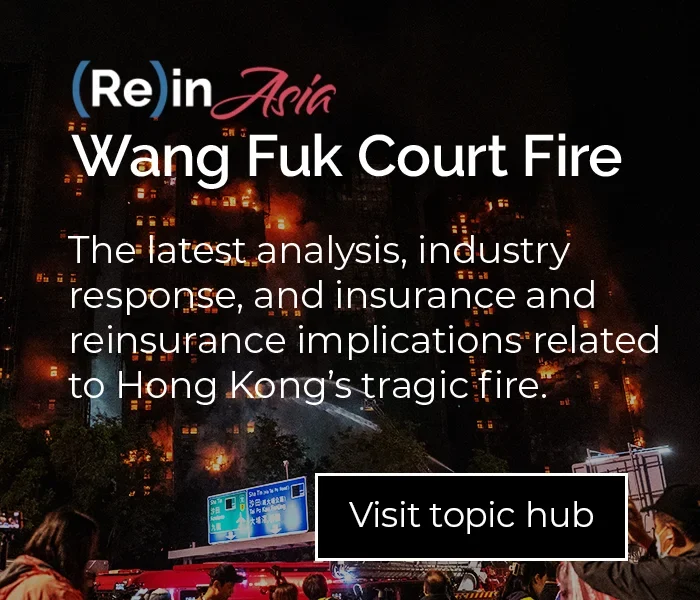(Re)in Summary
• Home to over 80 million people, the GBA continues to offer growth prospects for insurers.
• Industry experts at the InsureTech Connect Asia Roadshow highlighted opportunities to partner with the venture capital sector to accelerate GBA expansion.
• Executives urged insurers to adapt business models and products to the evolving GBA landscape, including the ageing population and rising demand for holistic solutions addressing healthcare needs.
• Major challenges in digital transformation range from ensuring regulatory frameworks provide clear guidance to filling the talent gaps that hinder the adoption of new tech.
The Greater Bay Area (GBA) continues to present growth opportunities for insurers seeking to tap its large customer base and ongoing digital transformation, industry experts said at the InsureTech Connect Asia Roadshow in Hong Kong on Thursday (1 February).
The region spanning Hong Kong, Macau, and nine cities in Guangdong is home to over 80 million people with rising income and insurance needs. Its venture capital (VC) market can also help insurers accelerate innovation through partnerships and investments in insurtech startups, panelists said.
Speaking at the event, Minnie Yu, head of business development, Hong Kong and high net worth at RGA, urged insurers to actively adapt their business models, products, and distribution channels to the evolving region.
A massive customer base
The GBA enjoys a huge customer base thanks to its large working-age population, Yu noted. Around 75% to 80% of residents across the GBA municipalities are between 19 and 59, which are prime working years.
Yu stressed the importance of catering products and services to the needs of this young working demographic. “These cities are filled with young individuals eager to start families and plan for their careers and businesses. They are people who require coverage for health, protection, and wealth accumulation goals,” she said.
Recent customer surveys provided valuable insights, she added. Data from Hong Kong and mainland China showed over 75% of customers in Hong Kong purchased insurance even before marrying, with monthly household incomes averaging over ¥100,000 (US$14,085).
Rather than a scattershot approach, Yu said they focus their efforts on reaching “the mass affluent within the GBA’s large workforce.” This ensures their products and messaging are tailored for target customers seeking financial security across the region.
Hong Kong leads the market
When choosing insurance products, mainland China customers consistently prefer Hong Kong insurers above those in other markets, according to Yu. She cited transparency and regulatory standards as major factors in Hong Kong’s favour.
“An overwhelming 75% of surveyed customers say they trust Hong Kong insurers due to its stringent rules and stability. Upholding this trust remains essential as competition grows,” she explained.
Customers also value Hong Kong’s diversity of financial and insurance options. “Combining investment and protection under one plan strongly appeals to customers seeking multiple benefits,” Yu says.
One growing area of focus is retirement products catering to Hong Kong and China’s aging populations. The needs of senior citizens present a major future growth avenue. Yu emphasized the importance of collaboration between insurers and governments.
“As the proportion of elderly rises throughout Asia, including in China, it is essential that our industry partners with the public sector to support this demographic shift,” she stated.
Bridging insurance and health
Peter M. Dingle, head of ecosystems and partnerships, venture capital, alternatives, HSBC Asset Management, echoed the importance of partnerships. “Leveraging the existing customer base through industry ties allows us to efficiently gain market share across the GBA,” he explained, highlighting purpose-built products meeting specific consumer needs as the next priority.
From a venture capital perspective, Dingle acknowledged recent global volatility. He noted two key challenges faced by venture capital firms: finding secondary buyers for existing investments and raising new funds.
However, he saw opportunities emerging at the insurance-healthcare intersection. “The ties between overall healthcare (including physical and mental health), financial health and insurance are impossible to ignore,” he said.
Dingle believed the ability to tackle holistic health issues through innovative solutions offers promising prospects for partnerships between VC firms, insurers, and medical services targeting rapid expansion across the GBA.
Navigating technological evolution
Meanwhile, Dingle discussed how generative AI and innovative customer engagement methods are helping to address data analytics challenges and enhance the customer experience. He noted these trends are particularly prominent in Shenzhen and throughout the GBA.
Dingle emphasised the need for Hong Kong insurers to learn from the GBA’s progressive approaches to transforming traditional insurance businesses. Adopting technologies like AI and big data from centers like Shenzhen positions “Hong Kong to become an Asia leader in high-growth sectors such as digital assets, med tech, and health tech within the next five to ten years.”
The convergence of technology, namely AI and big data analytics, presents significant opportunities across the insurance value chain. “These tools have the potential to drive improvements in transparency, revenue, and efficiency verticals like retail, commercial, marine, and auto insurance,” Dingle explained.
As Hong Kong seeks to become a leader in areas such as digital assets and emerging technologies, the GBA serves as a source of both inspiration and collaboration for driving the evolution of the insurance industry.
Digital transformation pain points
However, effectively implementing digital transformation strategies continues to pose significant challenges. These range from a lack of clear regulatory frameworks governing new business models and technology usage, to more practical ongoing issues around securing data quality at scale as well as addressing pervasive talent gaps.
Nathaniel Chandra Harjanto, director at AIA Group, emphasised the urgency for regulators and insurers to overcome regulatory complications to secure long-term growth and success.
“Regulations change very rapidly in markets and insurance is a highly regulated industry. Without conclusive regulations, there is uncertainty,” Harjanto said, adding that insurers should proactively engage with regulatory bodies to remedy this situation and help shape policies that facilitate, rather than hinder, appropriate adoption of innovation.
Eve Fung, regional head of P&C claims, Asia at Generali, made it clear that when implementing technologies, close attention to detail matters.
For example, when it comes to managing insurance claims across Asia, Fung noted insurers face challenges created by a lack of granular data and the detailed information necessary for accurate assessments.
Adding to the challenges is a shortage of talent with the skills needed to facilitate the adoption of advanced technologies like generative AI, Harjanto noted. “To roll out new functions, we need employees with certain skill sets,” he said.
























